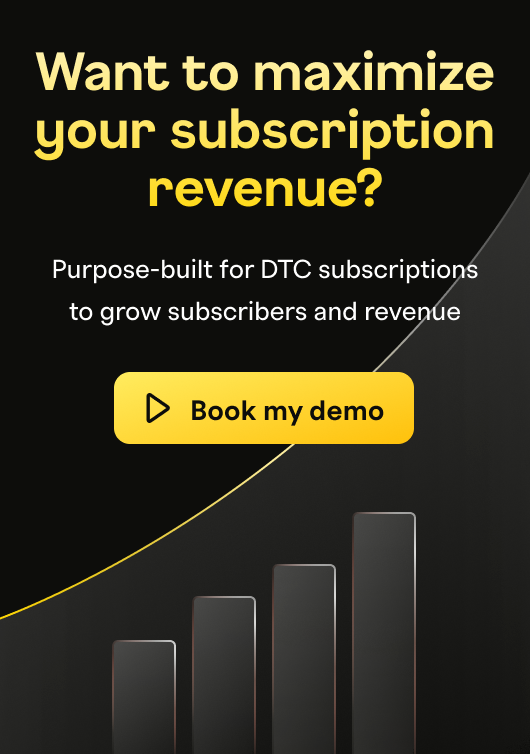A quick guide to SaaS subscription management

With the Software as a Service (SaaS) industry set to hit about $1.1 trillion by 2032, one thing is clear: SaaS subscription models are here to stay. But as more technology enters the market, standing out takes more than just a great product — providers must create a seamless, engaging customer experience to stay competitive and get ahead of what’s next.
That’s why a comprehensive subscription management platform isn’t just a backend tool — it’s a growth engine. Now more than ever, solution providers need one powerful SaaS subscription management platform to handle complex monetization and pricing models, forecast future revenue through reliable data, and engage subscribers with an exceptional customer experience.
What is SaaS subscription management?
SaaS subscription management is how Software as a Service companies bill their customers, recognize revenue, apply pricing rules, analyze usage trends, and engage customers throughout the entire subscription lifecycle — which is critical for long-term customer engagement and retention.
Anticipating and adapting quickly to the changing needs of subscribers isn’t always easy, but a SaaS subscription management platform makes it possible to perfect the subscription experience. Let’s take a closer look at what SaaS subscription management platforms do:
Automate complex billing
A robust subscription management platform handles the behind-the-scenes complexities of SaaS billing. It applies the right pricing for each subscriber — such as per user, by volume, or anything in between — and sets the rules for how and when you charge customers while keeping track of payment status.
Empower and engage subscribers
Our 2025 State of Subscriptions report found that businesses offering a pause option saw 25% of subscribers pause instead of canceling. It also found that 71% of businesses now offer both monthly and annual plans, reflecting the demand for personalized subscription options.
SaaS subscription management tools give customers the options they want, letting them upgrade, downgrade, or switch plans without contacting support or losing their data. Additionally, as subscriber engagement becomes critical, these tools give you in-depth data to deliver personalized communications and experiences in every part of the subscriber lifecycle.
Streamline customer data
From sales and marketing to finance and engineering, your SaaS business should be a well-oiled machine with customer data flowing easily between departments. Subscription management platforms sync different payment gateways, CRM systems, accounting software, and other business tools, making it easy for teams to collaborate, access financial reporting, and track each customer’s plan details.
Simplify compliance
Subscription businesses are expected to follow rules and regulations around recognizing revenue. This can be especially challenging when selling to a global market. A subscription management platform can help ensure compliance with global, ever-changing compliance and reporting standards. Plus, it can reduce audit risk and costs by cutting manual processes and automating revenue recognition rules.
Why SaaS subscription management matters
In a crowded market, SaaS companies must meet their subscribers’ needs to win long-term loyalty. That’s why flexible, scalable systems help prevent renewal issues, billing mistakes, and lost insights that lead to missed opportunities and voluntary churn.
If you choose not to use a SaaS subscription management platform, you’ll likely run into the following:
Lost revenue from missed renewals: Involuntary churn is the silent killer of subscription revenue, and if you don’t have a way to keep track of renewals and payment failures, you probably lose more subscribers than you should. Subscription management platforms automatically update payment information before renewal, so you’ll avoid lost revenue for you and service disruptions for your customers. If payments slip through the cracks, top subscription management tools offer custom dunning campaigns you can rely on to recover lost revenue through targeted emails.
High rate of billing errors: In a SaaS subscription model, customers expect the flexibility to adjust their plans mid-cycle and scale user access as their business needs change. However, this flexibility makes managing revenue, billing, and compliance more complex, especially across multiple countries. SaaS subscription management platforms can streamline this process by automating and seamlessly syncing customer plan changes, while recognizing revenue correctly. This helps you maximize revenue while staying compliant wherever you sell.
Customer attrition: Leading SaaS companies know flexibility is the foundation of loyalty. Our 2025 State of Subscriptions report also found that businesses offering tailored retention-driving options such as pause features, tiered pricing, and loyalty incentives are more likely to sustain a Renewal Invoice Paid Rate (RIPR) of 95.6%. It’s clear customers want to manage their own plans easily — and if they can’t, they may leave. Subscription management tools let subscribers update their plans anytime, which keeps them happy and reduces work for your team.
Fragmented subscription data: When billing and account data are split between spreadsheets, CRMs, and processors, your team has a fragmented view of subscription data, causing confusion, delays, and errors. SaaS subscription management platforms streamline this data into one central resource, so your team can seamlessly function as one.
Inflexible pricing tools: As pricing models shift to per-user or usage-based, companies without the right tools struggle to keep up as they try to make do with manual adjustments. With SaaS subscription management software, you can offer customers a wider variety of combined pricing options in the same instance — such as tiered pricing and usage-based pricing. For example, subscription management software allows customers to make one-time purchases and subscription purchases at the same time, from the same cart. That’s something many basic pricing tools just can’t do.
Unreliable forecasting: Customer data is a goldmine that allows you to engage your subscribers with timely upsell and cross-sell offers. Unfortunately, average recurring billing software doesn’t provide the most accurate numbers. SaaS subscription management tools actively monitor usage and provide deep insight into customer behavior, churn predictions, and more to facilitate informed decisions. Whether you need to save subscribers with targeted cancellation flows or send personalized prompts to inspire an upgrade, the right tool makes it easy to target and engage your audience.
Manual operational burden: When your team spends too much time manually fixing invoices, chasing payments, and updating plans, productivity takes a hit. SaaS subscription management tools automate these processes to make time for the higher-impact work that will garner real results.
SaaS subscription management vs. recurring billing software
If you already use recurring billing software, you may wonder if SaaS subscription management software is really that different — and the answer is yes.
While a recurring billing tool charges customers on a set schedule, this is one small piece of the subscription management pie. A full-scale subscription management platform handles pricing, renewals, usage, account status, compliance, and even revenue forecasting in one single tool. This makes your subscribers’ experience better and your selling experience easier.
Let’s look at how the two tools differ:
How recurring billing works
Billing basics: When it comes to the basics, recurring billing is just that: basic. This technology only offers fixed plans and flat rates, which means shoppers have no choice but to subscribe to a monthly or annual plan. It sends standard invoices and collects payments, but if customers want to adjust their plan, they must contact support.
Data, reporting, and integrations: Companies that use simple recurring billing software can’t gather customer data to create targeted campaigns because it doesn’t show real-time usage or insights. It also rarely connects with other departments’ software to streamline the employee experience.
Payment flexibility and safety: Customers want flexible ways to pay, besides just credit and debit cards. For example, Apple Pay saw a 269% year-over-year growth in adoption. Unfortunately, basic billing software offers limited payment and gateway options and little help with churn prevention.
How subscription management software works
Billing basics: SaaS subscription management platforms offer an almost fully automated experience, handling cancellations, mid-cycle changes, payment retries, and more without manual work. Companies can launch new plan types in minutes and give subscribers plenty of self-serve options to control their experience.
Data, reporting, and integrations: In-depth analytics around subscriber preferences make it easy to engage customers with hyper-personalized offers. Detailed data on subscriber acquisition, retention, churn, and more is easily accessible to all departments because it syncs customer data across CRM, finance, and product systems. Plus, it makes it easier for companies to comply with multiple revenue reporting standards and forecast revenue.
Payment flexibility and safety: Subscription management tools allow a multitude of payment and gateways so merchants can offer a variety of payment options, from traditional credit cards to Alternative Payment Methods (APMs). Churn prevention tools like an account updater work behind the scenes to prevent involuntary churn as they update payment details and retry charges at optimal times.
How SaaS companies use subscription management
Subscription management automates behind-the-scenes tasks, manages customer requests, and syncs subscriber data across your company’s tools — ultimately benefiting your entire team from finance to engineering.
Finance teams
With subscription management, accounting teams can automate revenue recognition to avoid complicated manual processes that usually accompany subscription contracts and pricing models. Subscription management software also matches data — key billing metrics like churn, failed payments, Average Recurring Revenue (ARR), and more — across payment systems and your CRM for easy access.
Sales teams
As unique SaaS subscription models like ramp, tier, and volume pricing gain momentum, subscription management software allows sales teams to sell smarter. They can create custom plans, future updates, and flexible models that fit each customer’s unique needs. Plus, it syncs smoothly with your CRM and allows you to easily upsell customers in any stage of their cycle.
Customer success and support
SaaS subscription management software lets customers manage much of their own subscription lifecycle, easing the load on your support team. Meanwhile, customer success teams have a full view of each customer’s account to quickly handle issues as they arise.
Product and engineering
Your billing process can make or break the quality of your service offering. With subscription management software, product and engineering teams can seamlessly apply usage data to billing logic — whether it's per-seat, volume-based, or other consumption models. They can launch new pricing structures without modifying core code, which speeds time-to-market for new offers. The system can also automatically enforce account access based on payment status, ensuring only paying customers maintain service.
SaaS subscription management: your company’s secret weapon
Subscription billing alone can't keep pace with changing plans, usage demands, and customer expectations in the SaaS industry. As your SaaS business scales, look for a comprehensive system that handles complex billing scenarios, actively engages subscribers, and keeps customer data flowing seamlessly across all departments.
Recurly's subscription management and billing platform gives you full visibility into your subscribers, eliminates manual tasks, and frees up time to focus on what matters most: creating standout customer experiences that keep them coming back.
Schedule a demo today to see how Recurly simplifies subscription management.

